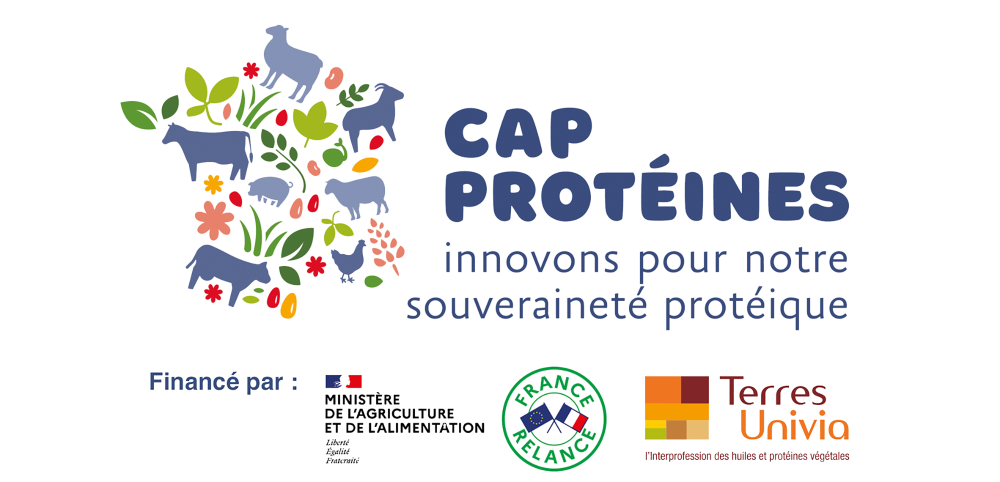2021 lentil and chickpea crop report
2021 lentil and chickpea crop report
While lentil yields are very disappointing in all production regions, chickpea production is holding steady despite the difficulties. These two essential productions for the French farm can count on four complementary mechanisms to support their development: very favorable contractualization conditions, a structuring of the sector in progress, intense Research-Development-Innovation activities and multiple outlets. All the links in the chain, from upstream to downstream, are mobilized to support the dynamism of the lentil and chickpea sectors.
Contrasting lentil and chickpea campaigns in 2021
An atypical year for lentils: unfavorable weather conditions
The lentil areas for the year 2021 were rather stagnant or in decline compared to 2020, which counted 35,520 ha of production areas. The results of the campaign show a very disappointing harvest throughout the country, with net yields 2 to 3 times lower than the average yield observed over the last three years: 8 q/ha in Aube, Marne and Yonne (vs. 27.3 q/ha), 6 q/ha in Centre-Val de Loire (vs. 15 q/ha), 3 q/ha in South-West (vs. 8.6 q/ha), 4 q/ha in Haute-Loire (vs. 5.6 q/ha) and 6.5 q/ha in Nouvelle-Aquitaine (vs. 18.6 q/ha).
The heavy rainfall is partly responsible for the low yields this year: development of weeds, re-flowering, worms complicating the harvest, high rate of seeds on the ground, germinated seeds (40% in some areas). The harvests were thus delayed by 15 days to 1 month. In all the production basins, the quality of lentil seeds is below the criteria usually expected: small calibers, numerous defects noted (moldy, crumpled, broken seeds, or with color defects).
Chickpeas: a rather stable harvest according to regions
Chickpea areas were stable in 2021 (about 23,500 ha, as in 2020). Terres Inovia's projections also envisage an increase in surface areas for 2022. The 2021 chickpea harvest balance sheet shows correct yields in view of the year's climatic conditions: 17 q/ha net in the southwest (vs. 23 q/ha on average over the last three years), 20 q/ha net in the southeast (vs. 19 q/ha), and 10 q/ha in the other production sectors (vs. 16q/ha). In the South of France, the crop shows a certain resilience as yields remain respectable despite the difficult climatic conditions. On the other hand, in the other production regions, the crops were more disappointing.
The beginning of the campaign was marked by dry conditions and plant growth was constrained by cool weather in May. However, the yield components were well in place in the South of France in June. Ascochytosis arrived late and did not limit the yields (South of France). The rains also delayed the harvest (except in the South-East) to the end of August-September (instead of the end of July to the end of August) and a deterioration of the quality of the seeds (except in the South-East) with the observation of saprophytic fungi and green seeds on the harvested samples. Some germinated seeds were noted.
"If France is the first lentil producer in Europe, the harvest of this seed is very disappointing this year because of the climatic hazards. But let's remember that the years 2016-2019 were particularly favorable for this production. The chickpea crop is doing well. The very young French lentil and chickpea sectors have good development prospects: demand is there and there are many outlets. In France, we are able to cover our needs in lentils and chickpeas. If every link in the chain works together, we will not fall back into the trap of large-scale imports and will be able to secure producers' incomes," says Antoine Henrion, farmer and president of Terres Univia.
Four complementary levers to support the lentil and chickpea sectors
Contractualization
The lentil and chickpea sectors offer farmers the possibility of contracting up to 100% of their harvest, thus guaranteeing purchase and price, and securing short-term income. Most of the production has been under contract for two years. Operators are currently working on the contracts, taking into consideration the current competitiveness with other crops whose prices are high.
Structuring local supply chains
Since 2020, several territorial approaches, mobilizing Terres Univia and Terres Inovia, are conducted to develop and structure the plant protein chains throughout the territory. The regional structures will make it possible to secure and multiply outlets (collective catering, innovative products, etc.) and to enhance the value of production in the long term.
Technical innovation and "Cap Protéines"
Terres Inovia's research and development activities support lentil and chickpea production in order to propose varieties adapted to French conditions and to optimize technical itineraries (secure planting, weed control, bruchid management, etc.). Cap Protéines, the research, development, innovation and transfer program of the Protein Plan launched by the public authorities within the framework of France Relance, has thus made it possible in 2021 to set up the first multi-partner network for the evaluation of lentil varieties and to expand the network of chickpea varieties: 8 lentil varieties of all types (blond, coral, black, and green) are tested in 13 trials and 11 chickpea varieties in 15 trials. Observatories of about ten plots, conducted by Terres Inovia in partnership with the chambers of agriculture, are also being set up in five regions in order to strengthen the acquisition of knowledge for conducting robust chickpea and lentil crops. In addition, a decision support tool for inserting legumes into cropping systems, taking into account their economic interest and the benefits they provide depending on the region, is being designed.
Consumption and new outlets
48% of French people eat legumes at least once a week1. This figure shows that consumers are becoming increasingly interested in legumes. If the consumption of vegetable proteins is on the rise, it is stimulated by the multiplication of possible outlets for lentils, chickpeas and other legumes that allow the co-products of lentils and chickpeas (fragmented seeds in particular) to be valorized: flours for human consumption, use in animal feed, multiplication of legume-based dishes on supermarket shelves...
1 Results of the CRÉDOC study, Food behaviors and attitudes in France, May 2021, conducted for Terres Univia as part of Cap Protéines.
To follow all the news about Cap Protéines

www.terresinovia.fr/cap-proteines


